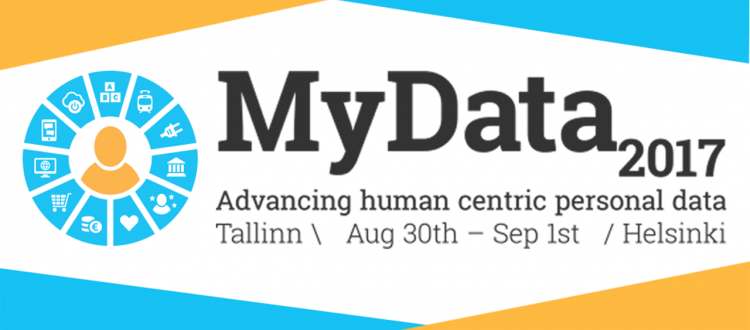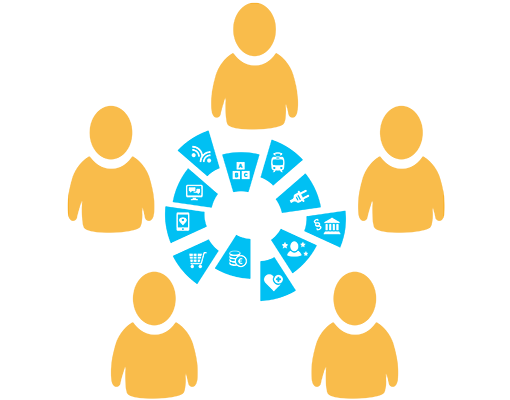
This is a guest post explaining the focus of the MyData conference in Tallinn and Helsinki later this month.
By a famous writing tip, you should always start texts with ‘why?’. Here we are taking that tip, and we actually find many ways to answer the big Why. So,
Why MyData 2017?
Did you get your data after MyData 2016 conference? No, you did not. There is lots of work to be done, and we need all the companies, governments, individuals and NGO’s on board on Aug 31-Sep 1 in Tallinn and Helsinki. When else would you meet the other over 800 friends at once?
Because no. 1: The work did not stop after MyData 2016
The organizers Fing, Aalto University, Open Knowledge Finland, and Tallinn University have been working on the topic also after the conference. Fing continues their MesInfos project, started in 2012, which goes to its second phase in 2017: implementing the MyData approach in France with a long-term pilot involving big corporations, public actors, testers and a platform. Aalto University is the home base of human-centric personal data research in Finland. Many Helsinki-based pieces of research contribute their academic skills to the conference’s Academic workshops.
Open Knowledge Finland, apart from giving the conference an organizational kick also fosters a project researching MyData implementation in Finnish public sector, of which we will hear in the conference too. Tallinn University, as the newest addition to the group of organizers, will host the conference day in Tallinn to set the base for and inspire MyData initiatives in Estonian companies, public sector, and academic domain.
In addition to the obvious ones, multiple MyData inspired companies to continue on their own. Work continues for example in Alliance meetings, and in some cases, there are people working from the bottom up and acting as change makers in their organization.
MyData 2016 went extremely well, 95 % of the feedback was positive, and the complaints were related to organizational issues like the positioning of the knives during lunch time. Total individual visitor count was 670 from 24 countries. All this was for (at the time) niche conference, organized for the first time by a team mainly of part time workers.
The key to success was the people who came in offering their insights as presenters or their talents in customer care as volunteers. MyData 2017 is, even more, community driven than the year before – again a big bunch of devoted presenters, and the volunteers have been working already since March in weekly meetings, talkoot.

Because no. 2: The Community did not stop existing – it started to grow
MyData gained momentum in 2016 – the MyData White paper is mentioned in a ‘Staff Working Document on the free flow of data and emerging issues of the European data economy’, on pages 24-25. The white paper is also now translated from Finnish to English and Portuguese. Internationally, multiple Local Hubs have been founded this year – of which you hear more about in the Global track of the conference – and a MyData Symposium was held in Japan earlier this year.
The PIMS (Personal Information Management Systems) community, who met for the fourth time during the 2016 conference, has been requesting more established community around the topic. “Building a global community and sharing ideas” is one goal of MyData 2017, and as a very concrete action, the conference organizing team and PIMS community have agreed to merge their efforts under the umbrella name of MyData. The MyData Global Network Founding Members are reviewing the Declaration of MyData Principles to be presented during MyData 2017. Next round table meeting for the MyData Global Network will be held in Aarhus in November 23.–24. 2017.
Open Knowledge Estonia was founded after last year’s conference. Since MyData was nurtured into its current form inside the Open Knowledge movement, where Open Knowledge Finland still plays the biggest role, MyData people feel very close to other Open Knowledge chapters. See for yourself, how nicely Rufus Pollock explains in this video from MyData 2016 how Open Data and MyData are related.

Because no. 3: Estonians are estonishing
“Why Tallinn then?” is a question we hear a lot. The closeness of the two cities, also sometimes jointly called Talsinki, makes the choice very natural to the Finns and Estonians, but might seem weird looking from outside.
Estonia holds the Presidency of the Council of the EU in the second part of 2017. In an e-Estonia, home of the infamous e-residency, MyData fits naturally in the pool of ideas to be tossed around during that period. Now, having the ‘Free movement of data’ as the fifth freedom within the European Union, in addition to goods, capital, service, and people, has been suggested by Estonians, and MyData way of thinking is a crucial part to advance that.
Estonia and Finland co-operate in developing X-road, a data exchange layer for national information systems, between the two countries. In 2017, the Nordic Institute for Interoperability (NIIS) was founded to advance the X-road in other countries as well. Finnish population registry center and their digitalized services esuomi.fi is the main partner of the conference in 2017
Estonia and Finland both as small countries are very good places to test new ideas. Both in Helsinki and Tallinn, we now have ongoing ‘MyData Alliance’ meetups for companies and public organizations who want to advance MyData in their organizations. A goal of MyData in general, “we want to make Finland the Moomin Valley of personal data” will be expanded to “we want to make Finland and Estonia the Moomin Valley of personal data”.
Stories and updates from Open Knowledge chapter in Finland








